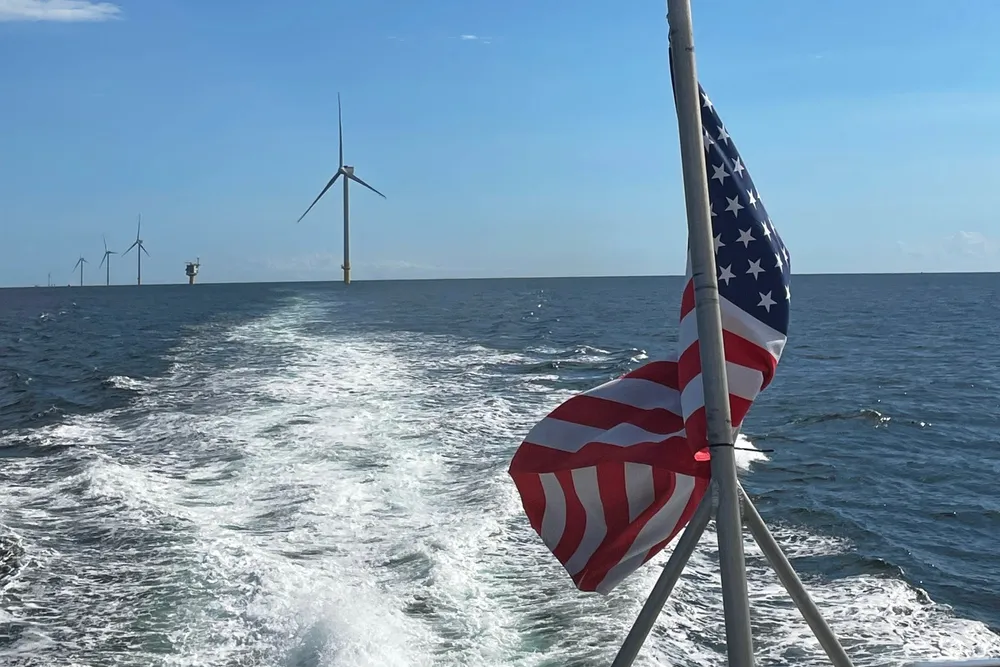Onshore wind holds firm as America piles on clean gigawatts
Industry group finds solar and storage continue to lead the way in nation's ongoing renewables ramp, with onshore wind seeing surprisingly robust pipeline growth

The US installed 7.4GW of clean energy capacity in the first three months of 2025, the second largest quarter ever for the industry that signals last year’s boom remains ongoing despite political risk, industry group American Clean Power Association (ACP) said.
The nation installed 4.5GW of utility scale solar, 1.6GW of grid facing energy storage, and 1.3GW of land-based wind capacity.
The only quarter that saw larger growth was last year’s first quarter, and brings the nation’s total solar, storage, and wind installed capacity to over 320GW, “enough capacity to power the equivalent of almost 80 million US homes each year,” said Kelsey Hallahan, ACP’s senior director of market intelligence.
Battery storage installations saw their strongest quarter ever, reaching 1.6GW, a 65% jump in annual comparisons.
“We've never seen a Q1 where more than a gigawatt was installed,” Hallahan noted in a presentation at ACP’s Cleanpower 2025 conference yesterday.
The US now has more than 30GW of grid facing storage online.
The report comes as the clean energy industry grapples with moves by Republicans in the House of Representatives to dismantle key provisions of the former President Joe Biden’s signature legislative achievement, the Inflation Reduction Act (IRA).
Generous tax credits in the IRA have fueled expansion of renewables since it was passed in August 2022, but the law has been targeted for repeal by Trump as part of what he calls the “green new scam”.
In party-line voting, on Thursday the House passed its version of a tax-and-spending bill that phases out technology-neutral clean electricity tax credits after 2028 for wind, solar, and other renewable sources, requiring projects to begin construction within 60 days of Trump signing it into law.
This shorter eligibility period would be difficult to meet for many projects given lengthy US processes for permitting and interconnection. Presently, they can qualify for tax credits when “placed in service.”
Renewables pipeline
The pipeline of renewables projects remained strong despite this uncertainty, climbing to a record 184GW, a 12% rise in annual comparisons. This rise is notable as last year saw a record 313GW exit the pipeline and enter operation.
Developers not only added “enough new capacity to replenish all that left the pipeline, but to increase that from a net perspective,” Hallahan said.
ACP defines pipeline capacity as projects in advanced development, with either a signed power purchase agreement or other offtake, signed utility transfer agreements, or major equipment purchases.
“Once you've done one of those things, there's a really good chance that there might be some bad consequences if it doesn't get built,” Hallahan said.
The rise in the pipeline capacity was primarily due to gains in battery storage as well as land-based wind.
Consistent with recent trends, battery projects in development surged 57%, but more surprisingly, onshore wind saw substantial growth of 24%.
“People are still excited about wind,” said Rob Keiser, head of asset management at developer Orsted.
“It is a solution to our problems, and it can work 24/7. You'll continue to see customers that want wind. It has a good profile to answer the energy demand,” he added.
Orsted owns the nation’s first operating commercial-scale offshore wind array, the 132MW South Fork off New York, and has a growing stake in onshore solar and storage.
South Fork posted the best capacity factors in Orsted’s entire 8.2GW global portfolio, according to Keiser.
“What this is saying is this new installation, it's working. Offshore wind can be a solution,” he said.
Nevertheless, offshore wind has struggled under Trump, with his memorandum targeting the sector with leasing and permitting freezes and reviews of existing projects to terminate or amend them.
The sector’s pipeline dipped 8% in the first quarter as developers paused projects, but ACP sees some 15GW remains in development or under construction.
(Copyright)